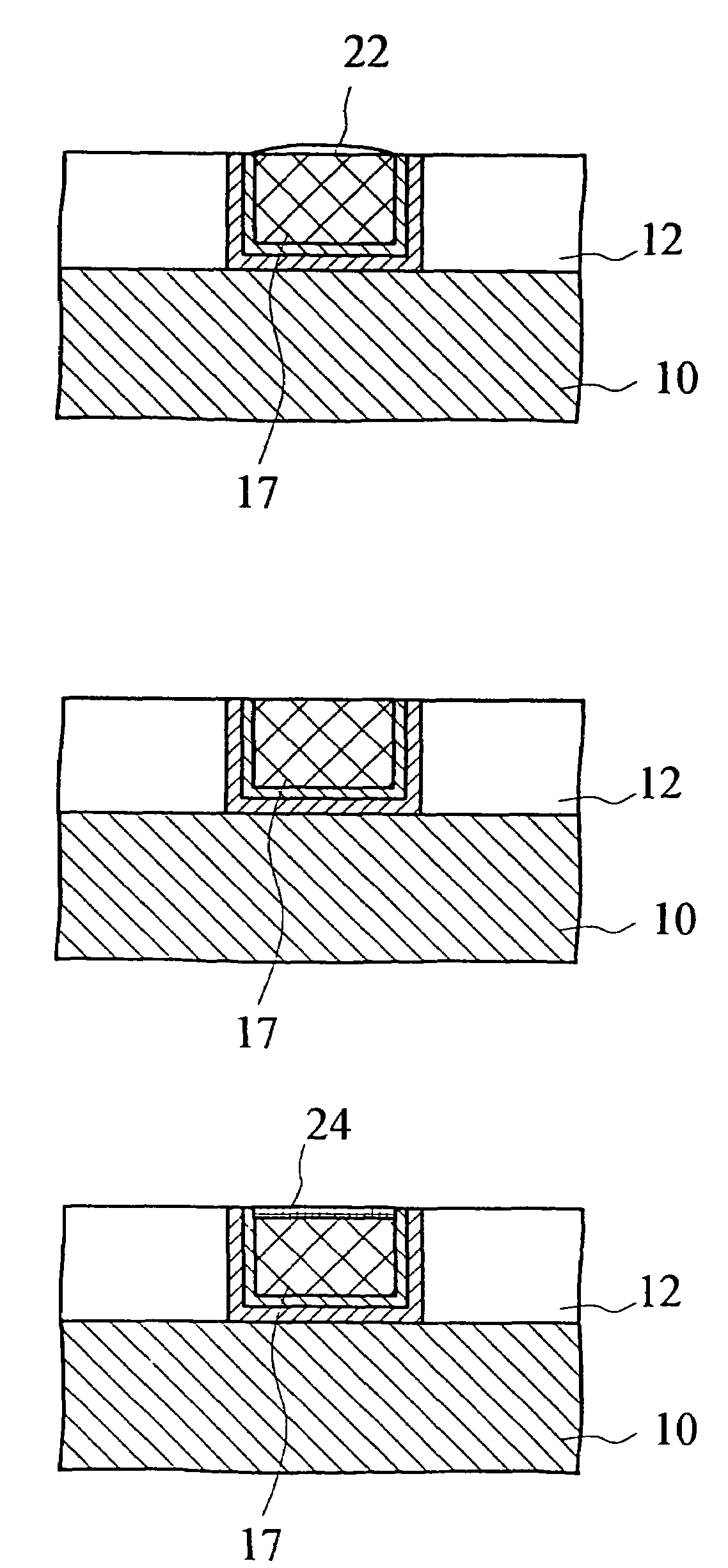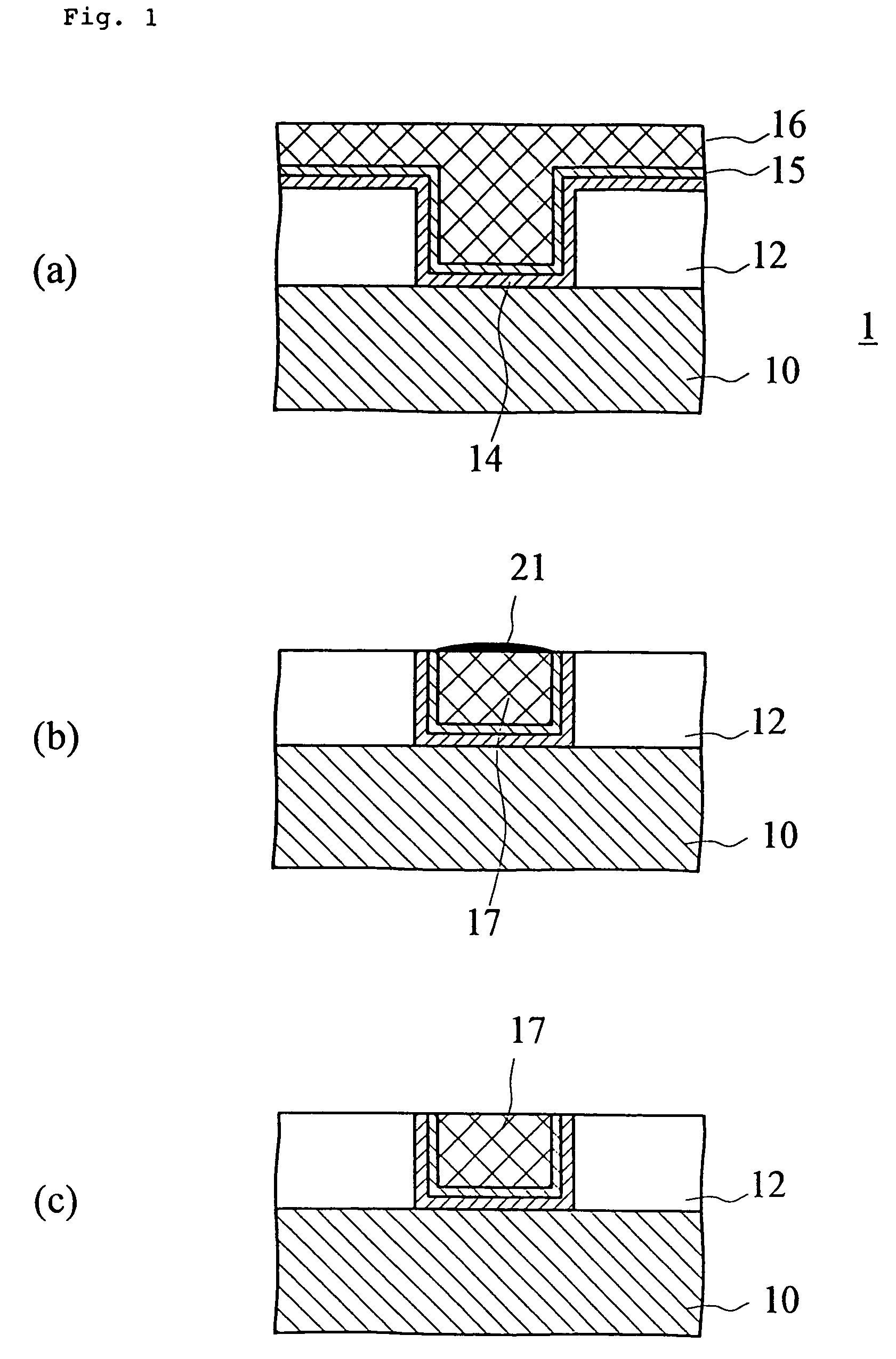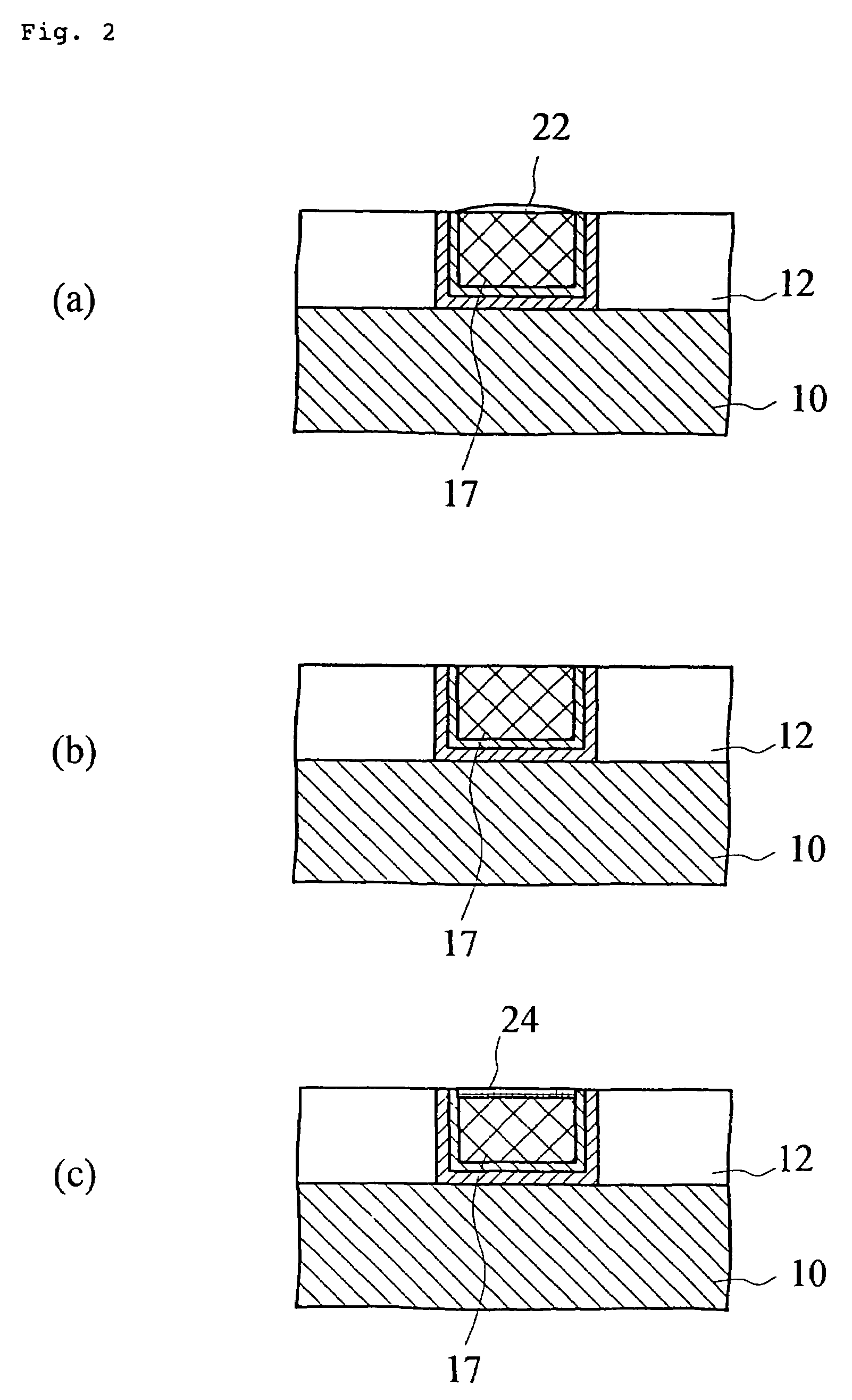Manufacturing method of semiconductor device
a manufacturing method and semiconductor technology, applied in the direction of semiconductor/solid-state device details, solid-state diffusion coating, coating, etc., can solve the problems of increasing electrical resistance, decreasing the adhesion between the copper interconnection and the copper-diffusion prevention film formed, and the conventional techniques described above, so as to prevent the increase of electrical resistance and reduce the effect of resistan
- Summary
- Abstract
- Description
- Claims
- Application Information
AI Technical Summary
Benefits of technology
Problems solved by technology
Method used
Image
Examples
example 1
[0072]Using a method of manufacturing a semiconductor device according to the present invention, copper interconnections were formed and their interconnection lifetimes and resistances were evaluated. The method of fabricating the copper interconnection is described below. First, by the plasma CVD method, a silicon oxide film was formed on a silicon wafer. Next, by dry etching, a plurality of interconnection trenches patterned into a prescribed shape were formed. Next, after a barrier metal film was formed from Ta by the sputtering method, a seed copper film and a plating copper film were formed in this order.
[0073]Subsequently, the wafer surface was polished by the CMP method so as to leave copper inside of the interconnection trenches, and thereby a copper interconnection was formed. Next, for the purpose of removing polishing grains, particles such as polishing shavings, metals and slurries, which were adhered onto the surface of the semiconductor wafer, the following steps of cl...
case 2
for Comparison
[0080]Copper interconnections were formed in the same way as Example 1 except that, after the oxalic acid treatment, not an ammonia plasma treatment but only a BTA treatment was performed and thereafter a silicon nitride film was formed.
[0081]The copper interconnections fabricated as described in Example 1 and Cases 1 and 2 for Comparison have planar structures shown in FIGS. 6(a) and (b). The interconnection resistances and the interconnection life times for these copper interconnections were evaluated. With respect to the interconnection resistance, the evaluation was made through the value of resistance (E1 / I1) which was obtained by making an electric current (I1) flow between terminals for measurement P3-P4 of FIG. 6(a), while increasing from 0 A to 1 mA, and measuring the potential difference (E1) generated thereat between both ends P1-P2 of the measuring element. Regarding the interconnection lifetime, the evaluation was made through the measurement of the time p...
case 1
for Reference
[0083]On a silicon wafer, a silicon oxide film is formed and thereon a copper plating film is formed over the entire surface. Following that, after the copper surface was polished by the CMP method, for the purpose of removing polishing grains, particles such as polishing shavings, metals and slurries, the following steps of cleaning were performed.
[0084]First, a scrub cleaning was made. That is, particle contaminations were removed by moving a rotating brush, while spraying a cleaning agent made of electrolytic ionized water onto the brush. Next, a spin cleaning was made. In this step, while rotating the semiconductor wafer, a cleaning agent made of an aqueous solution containing 0.03 wt. % of oxalic acid was sprayed thereto for 10 seconds to remove metal contaminations which are CuO lying on the surface, and then rinsing with pure water was carried out.
[0085]Next, an anticorrosive treatment was made. The agent for the anticorrosive treatment used herein had the follow...
PUM
| Property | Measurement | Unit |
|---|---|---|
| Electrical resistance | aaaaa | aaaaa |
Abstract
Description
Claims
Application Information
 Login to View More
Login to View More - R&D
- Intellectual Property
- Life Sciences
- Materials
- Tech Scout
- Unparalleled Data Quality
- Higher Quality Content
- 60% Fewer Hallucinations
Browse by: Latest US Patents, China's latest patents, Technical Efficacy Thesaurus, Application Domain, Technology Topic, Popular Technical Reports.
© 2025 PatSnap. All rights reserved.Legal|Privacy policy|Modern Slavery Act Transparency Statement|Sitemap|About US| Contact US: help@patsnap.com



